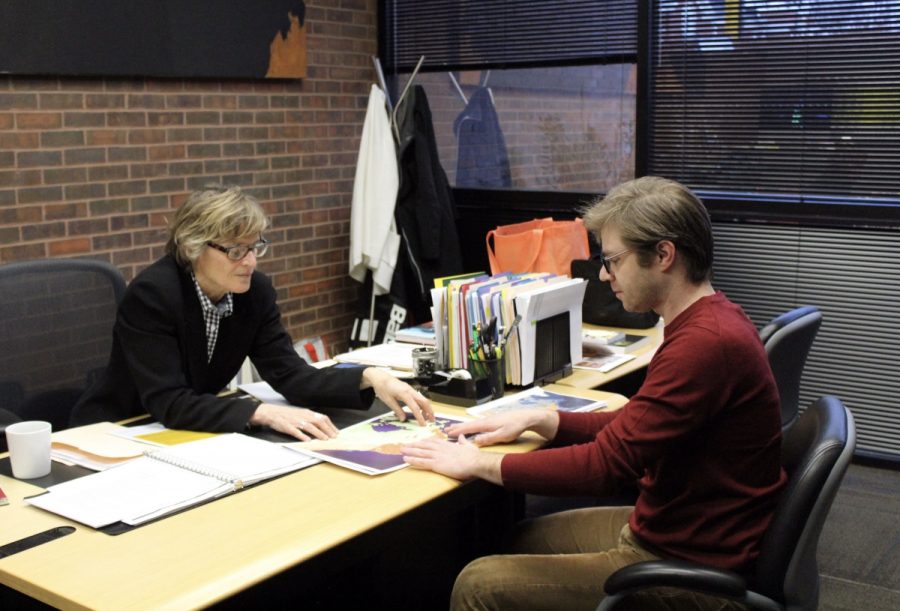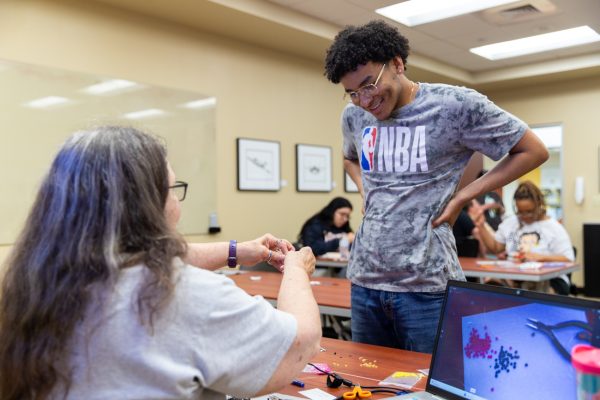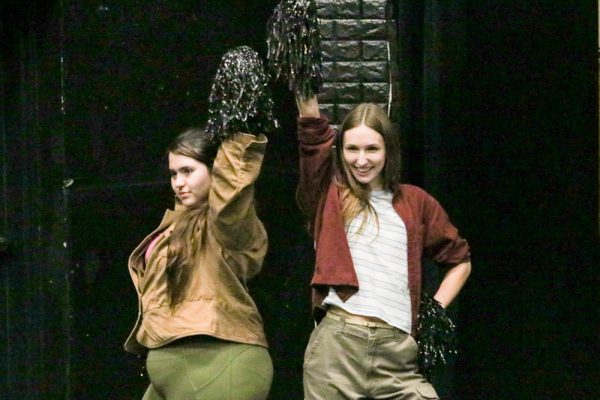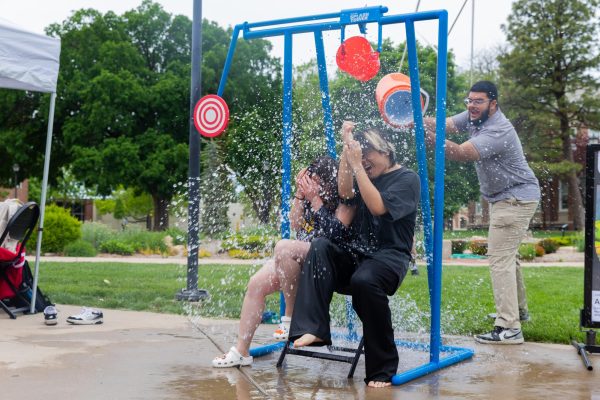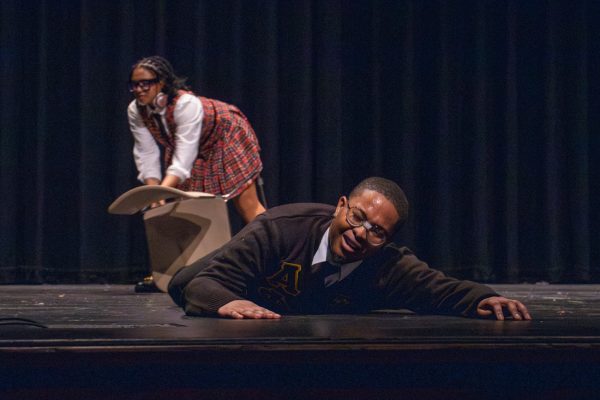Ulrich debuts programs to showcase faculty, student research
Leslie Brothers became director of the Ulrich Museum of Art at Wichita State in May.
Art museums may be characterized as enlightening, thought-provoking, and beautiful. One word you’re less likely to hear them described as is “fun.” Leslie Brothers, the new director of the Ulrich Museum of Art at Wichita State, said she hopes to change that.
Brothers, who was named director in May, is launching three new initiatives to connect art to academics like never before.
“We’ve created three opportunities for things to happen here that haven’t really happened before,” Brothers said.
The first initiative begins with an open invitation to faculty to include a visit to the Ulrich in their courses. When teachers bring their students to the museum, they will facilitate a discussion around selected works of art using the Visual Thinking Strategies model — a research-based, student-centered teaching system that uses art to build skills in observation, thinking, listening, and communicating. The museum will tailor the discussion and display to each class.
“I really wanted to have the opportunity to find out how the museum could matter at a university that has established innovation as their mode of operation,” Brothers said. “My decision to come here was very much inspired by or motivated by what President Bardo has been doing with WSU. I was very much interested in being part of that and running a university art museum in a way that could connect to that mission.”
That’s where the new campaigns to connect art, academics and research came from.
Two other initiatives showcase research being done across different departments using visual methods. The hope, Brothers said, is that by seeing the work, people will be able to understand it in a new way.
As part of the new Solving for X = Sustainability exhibition series, WSU research that addresses issues of sustainability will be visually demonstrated. The museum is collaborating with university scholars across campus to make this possible.
“It’s not about being an artist or showcasing art,” Brothers said. “It’s about making what people at WSU spend their lives doing accessible to the greater community,”
The intent is to work with scholars of all disciplines who are problem-solving for sustainability.
“Part of the mission of Solving for X, it’s to share the research that’s going on here but it’s also to get our students interested in doing research, so sharing with them what’s happening out there and how exciting and fascinating it can be,” Brothers said.
Brothers said she wanted to show the community what research is being done at the university through this program and give them a better sense of what is going on.
“There’s not a website you can go to, to see all the research that goes on at WSU,” Brothers said.
The initiative will showcase a broad range of academic work. The first kicks off on Jan. 24 in collaboration with Andrew Swindle, assistant professor in the geology department.
“We’re taking what Andrew is working on and we’re creating a kind of visually immersive environment that is not an artwork — it is not intended to be that,” Brothers said. “It’s to simply, in a scientific fashion, visualize the research so you can kind of see it in pictures and get an understanding of it.”
The Future Now at the Ulrich (FUN), the third new program, is an extension of the Solving for X presentation idea. This series features campus-wide research projects on any topic imaginable. It’s intended to help people visualize current academic work being done at WSU.
“FUN is a program we’ve started, to accelerate those connections to research happening on campus,” Brothers said. “It’s not just faculty. It’s all current research.”
“Research” is meant to be a broad category. Any long-term academic projects through WSU may qualify. They don’t have to stay within the boundaries usually associated with institutional research.
FUN uses a series of Pecha Kucha presentations. Pecha Kucha is a simple Japanese presentation format which shows 20 slides or images, each for 20 seconds. Typically, the images or slides advance automatically and you can only talk about the image or slide while it’s being displayed.
During the spring semester, there will be three events in this series, with four presentations per night. The first one is on Feb. 1 and the deadline for submissions is Jan. 11. Anyone at WSU can apply.
Brothers is excited about the new campaigns but said it’s an unusual challenge for the staff to take on academic projects in this way.
“When you’re working on a project like this, you’re leaving your safe little museum world behind and you lend yourself to research that you know nothing about,” Brothers said. “You’re challenged to think differently about the work you do. I want us to grow in that way.”
HOW TO APPLY:
To apply, send a brief email proposal to: [email protected]
Include:
Name
Title (or if you’re an undergrad or grad student)
Department, Program or School
Research Topic
Preferred Presentation Date
FUN dates in the spring:
Friday, Feb. 1, 4-5pm / deadline for submission Jan. 11
Friday, March 1, 4-5pm / deadline for submission Feb. 8
Friday, April 26, 4-5pm / deadline for submission March 29
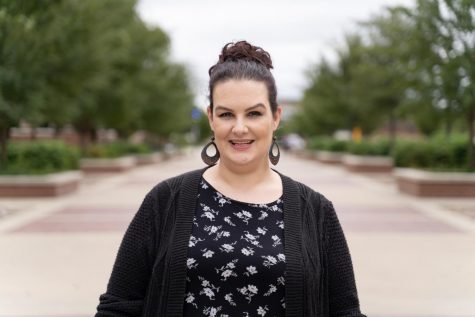
Audrey Korte was a reporter and the opinion editor for The Sunflower. She hosted The Sunflower News Podcast.



